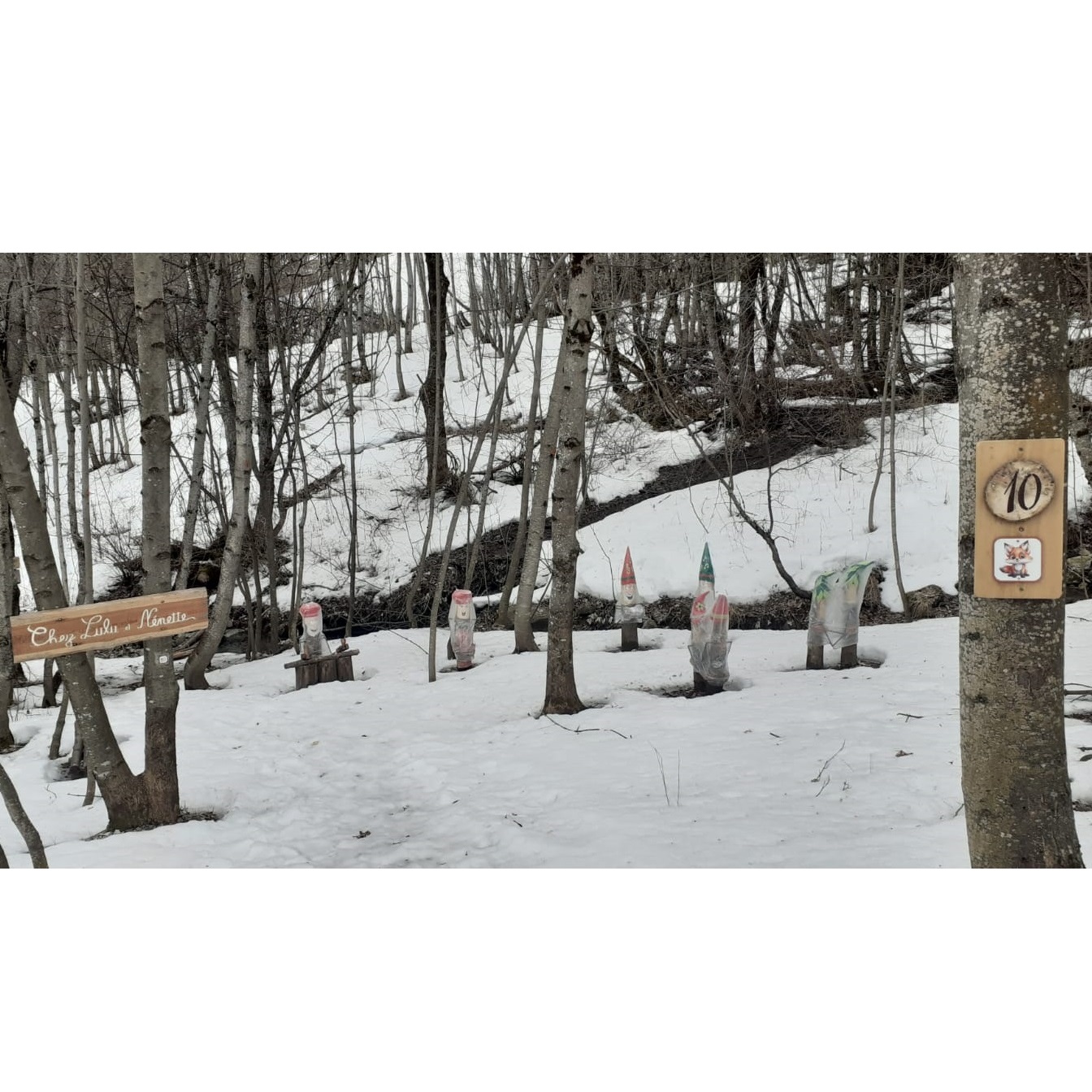
Route No.3 : Chemin des Lutins
Not very difficult
Slope color:
Blue
Corresponding ascent rating:
Slightly Difficult mountaineering
Description
Route: 4 km from the Vallouise Nordic Chalet - 225m ascent
Ascend from Vallouise to Puy Saint Vincent by taking the old postal route.
Marking: purple flag markers "ski de randonnée"
Description:
The route starts at the Vallouise Nordic Chalet.
You will gradually ascend via the historical trail that the postman used to take daily.
The descent is done via the blue slope "Vallouise", which connects Puy Saint Vincent to Vallouise.
- Towns crossed : Puy-Saint-Vincent and Vallouise-Pelvoux
Recommandations
→ You must bring your own safety equipment and know how to use it: avalanche transceiver, shovel, probe, first aid kit.
→ Night-time activities on Nordic areas are prohibited. It must be supervised by a professional and must be authorized by the slopes service.
→ Several itineraries are shared with cross-country skiers, snowshoe hikers/pedestrians, sled dogs and traileurs. Please be careful.
→ It is forbidden to ascend along the ski runs unless the markings tell you to do so. In this case, you do not have priority when crossing them.
→ Respect signage: dangers, prohibitions, direction of slopes, among other things.
→ Don't overestimate your abilities!
→ Take your garbage with you!
→ When ascending and descending off-piste, you may come across triangle-shaped fenced areas: these are areas set aside for the wintering areas of the black grouse (Tétra lyre). Respect these zones and go around them.
→ Don't hesitate to take along a topo-guide so that you have all the information you need on ski touring routes at hand.
22 points of interest
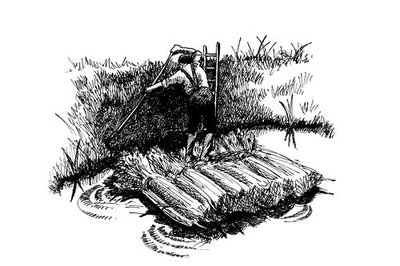
Rouissage du chanvre - PNE  Know-how
Know-howThe chenevières, hemp fields
There is a French saying «Avril donne le fil», meaning that April is string time. Sown in spring after the last frosts, the tall stems of hemp grow in tiny plots of ground, called chenabiers or chenevières. The hemp is cut at the end of August and the strands are immediately immersed in large holes filled with water - called the naïs - on the edge of wet meadows. They are left to steep for more than a month, in order to release all the gum that binds the plant fibres together.
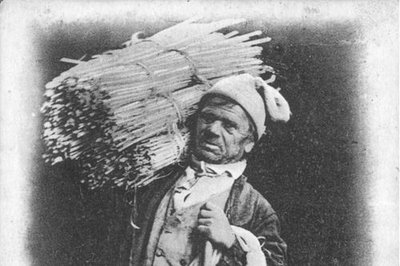
Paysan des hautes vallées - PNE  Know-how
Know-howHemp production
At one time, almost every winter evening would be taken up by stripping the fibre from the hemp straw. The strands had to be broken one by one, to remove the long, flexible filaments. Once washed and combed, these «balls» of hemp were taken to the rope and yarn spinners to be turned into rope, blankets and cloth for garments. When a family ordered cloth from the weaver, the entire family would go to the loom to attach the threads onto the warper.
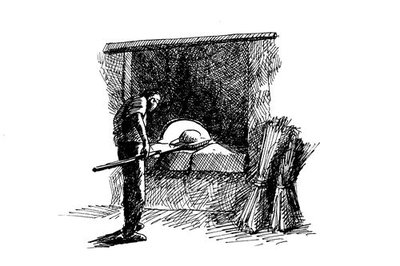
Le four banal - PNE  Architecture
ArchitectureThe commons
As «crosswise» as it might be, from end to end the main street of Puy-Saint-Vincent has every building the community needs. The mill is still here, complete with its intake and outlet mill races. The communal oven is lit on 14 July every year. It has just been restored and shares the little paved square with a lovely water fountain, made from wood and ringed with iron.
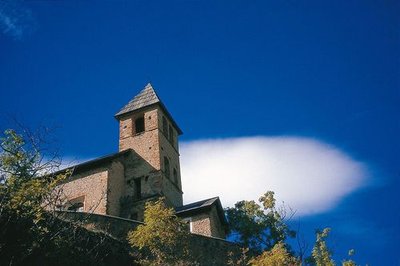
L'église de Puy-Saint-Vincent - Marie-Geneviève Nicolas - PNE  History
HistoryThe church of Sainte-Marthe
The church of Sainte-Marthe was built in the nineteenth century, in 1817 to be precise, as indicated at the top of the pediment. Only the main facade has a painted decoration. On two superimposed levels and on the gables, pilasters or false pillars frame either bay windows illuminating the nave, or panels painted with a false marble decoration. A few steles remind us of the present of the former cemetery. Included on the Supplementary Inventory of Historical Monuments, this church also contains a commemorative plaque honouring those who fell in the First World War.
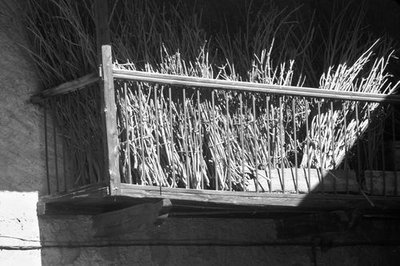
Séchage des fagots au balcon - PNE  Architecture
ArchitectureSolid architecture
Originally, the environment of the high valleys of the Pays des Écrins offered little space, in which men and animals cohabited. Unlike in Vallouise, where the architecture is a harmonious blend of arcades and decorative elements, the houses in Le Puy retain the rusticity of completely stone-built single block construction with half-hipped roofsprotruding over a drying balcony. This roof extension protects the main facade from bad weather, snow in particular. People can move about under shelter and the firewood store stays dry all winter. This barrel vaulted porch, which shelters the entrance to the main building and the stable, mirrors the Champsaur-Valguademar, «toune» (ground level arcade).

 Architecture
ArchitectureProtective shelter
Separate from the main building and at a distance from the barn, some property owners also have a small building providing safety from the much feared home fires. Here, in the coolness of this outside cellar, they stored ham, cheeses, flour, salt and other foodstuffs, but also whatever the family owned by way of valuables.
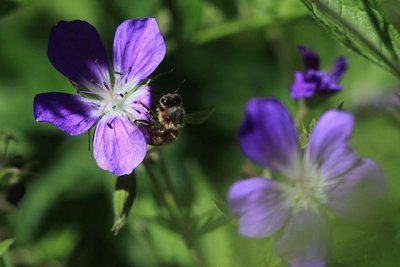
Géranium des bois - Marc Corail - Parc national des Écrins  Flora
FloraWood cranesbill
The path is edged with large clumps of a plant with purple flowers, the wood cranesbill. The leaves are palmate and divided into 5 to 7 incised and indented lobes, This common plant grows in meadows and cool woods. The «geraniums» we see on balconies are in fact pelargoniums, distant cousins originally from South Africa and cultivated for ornamental purposes.
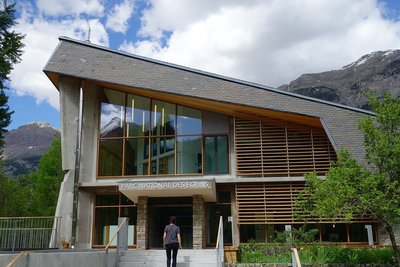
La Maison du Parc de Vallouise - Thierry Maillet - Parc national des Écrins  History
HistoryThe Vallouise Park Centre
Vallouise Pelvoux is a municipality within the Parc National des Écrins. Renovated in 2014, the Park Centre ("Maison du Parc") houses the offices of the local Park staff and has a spacious visitor reception area. It offers a permanent interactive exhibition inviting discovery of the territory and its heritage features, a temporary exhibition space on the upper floor and an audiovisual room (screenings and talks). It is currently in the process of applying for the "Tourisme et Handicap" tourism and disability label. Admission is free and so, too, are most of the activities in offer.

Hélice des Alpes - Damien Combrisson - Parc national des Écrins  Fauna
FaunaThe Alpine copse snail
On the damp banks of the stream, hidden in the grass, is a snail with a beautiful golden brown shell speckled with brown, decorated with a dark spiral stripe. It has a black body. The alpine copse snail is relatively rare and, as its name suggests, it is found in the Alps. It is a sub-species of the ordinary copse snail, which is present across Europe.
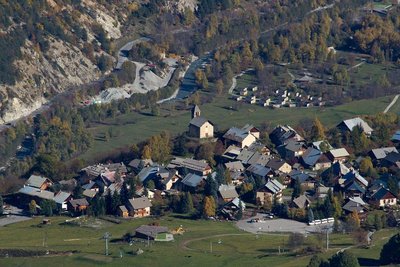
Vue sur Puy Saint Vincent - Christophe Albert - Parc national des Écrins  History
HistoryThe Sentier du Facteur - the postman's path
In former times, the postman would take this path every day: He would set out from Vallouise, deliver letters in Puy-Saint-Vincent and drop back down to Vallouise, stopping at the hamlets of Parcher on the way. In the winter, when the snow was too deep, the Traversouires (the inhabitants of Puy-Saint-Vincent) donned their snowshoes and wielded their shovels to clear the postman's path down to Vallouise.
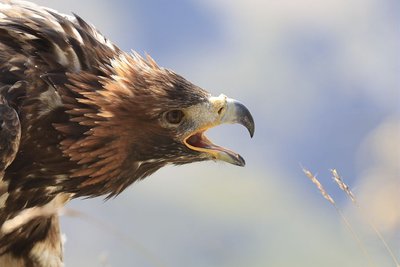
Aigle royal - Cyril Coursier - Parc national des Écrins  Fauna
FaunaThe sun bird
So what is the identity of this sun bird? It's the royal, or golden, eagle of course. Although it is telling the time here, in the surrounding natural landscape it hunts marmots. But what becomes of it in winter when the marmots hibernate deep in their burrows? It's a lean time. It has to make do with a hare or ptarmigan, and in particular the carcasses of chamois which have not survived the winter or have been killed in an avalanche.
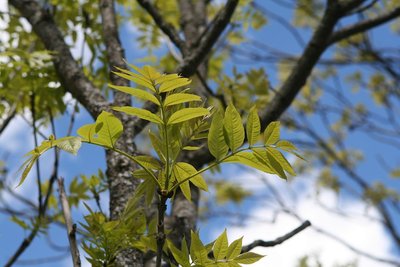
Un frêne - Marie-Geneviève Nicolas - Parc national des Écrins  Flora
FloraThe ash tree
Even in winter, the ash can be recognised from its large black leaf buds. The leaves are compound. A pioneer species that grows easily, the ash has long been used by man for everyday needs: its foliage was used to feed cattle and its hard, flexible wood was used to make a variety of objects such as tool handles. Its French name frêne often appears in local place names too: Freissinières (frêne noir - black ash), Le Freney etc. Evidence of its historical importance to human communities..

Un gerris - Bernard Nicollet - Parc national des Écrins  Fauna
FaunaThe gerris
Some strange creatures are moving jerkily over the surface of the water: Gerrises, insects related to bedbugs. Like a true insect, they have six legs and they «skate» across the water using their intermediate and hind legs which are covered in hairs to make them water-resistant. They are carnivorous and anything on the water surface, dead or alive, is good to eat! They catch their prey with the forelegs, sucking up the juices with their strong proboscis!
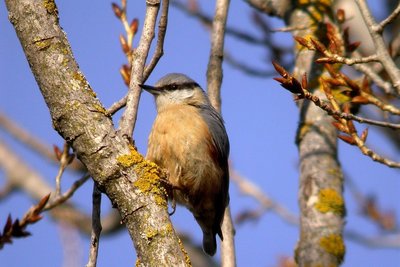
La sittelle torchepot - Damien Combrisson - Parc national des Écrins  Fauna
FaunaThe wood nuthatch
With its strident calls, this little acrobat gets itself noticed. With a blue-grey back and a black stripe over its eyes, it works its way down the tree trunks upside down in search of insects. It nests in old woodpecker nests but if the diameter of the entrance is too large it reduces it with mud, to protect its young from predators. Hence its French name torchepot (a reference to edging the rim of a vessel).

La mésange à longue queue - Robert Chevalier - Parc national des Écrins  Fauna
FaunaThe long-tailed tit
Some birds are causing a stir in a tree, constantly coming and going and uttering little calls. They are round and black and pinkish beige in colour with a long tails, hence their name, the long-tailed tit. They are resident birds and always live in small groups. They inhabit forests, undergrowth and even gardens. They weave a ball-shaped nest out of lichen, moss and dry grass.
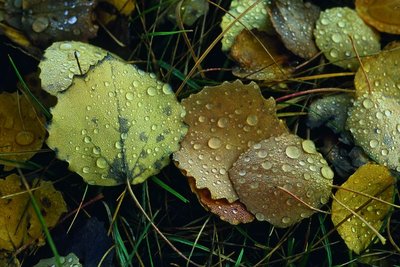
Des feuilles de tremble - Bernard Nicollet - Parc national des Écrins  Flora
FloraThe aspen
A sizeable aspen grows on the roadside, on the edge of a small wood of fellow-aspens. This tree has a smooth, greenish trunk and rounded, crenelated leaves which take on magnificent colours in autumn. The stem, or petiole, of aspen leaves is flat and twisted, so it can be caught by the slightest breeze making the foliage «quake» hence its common name, the quaking aspen. It grows in places where the soil is quite damp.
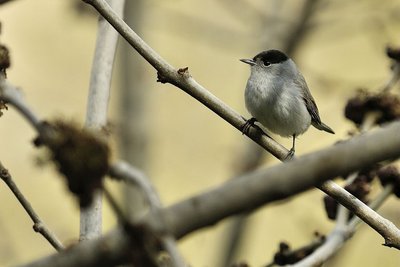
Fauvette à tête noire - Mireille Coulon - Parc national des Écrins  Fauna
FaunaThe Eurasian blackcap
Hidden in the tree foliage, the Eurasian blackcap announces its presence with its loud and piping song. Its head is adorned with a cap which is black in the male and russet in the female. The rest of its plumage is greyish, its underside lighter than its back. It is a migratory bird which travels to the Maghreb to overwinter. However, increasing numbers of birds make only a partial migration, flying to the south of France to spend the winter.

Un frêne élevé - Marie-Geneviève Nicolas - Parc national des Écrins  Flora
FloraThe ash tree
This is one of the most common trees, provided the ground is relatively cool. It is characterised by its pinnate leaves, that is to say, made up of several segments, and in winter is can be recognised by its large black leaf buds. The ash was extremely important in times past: its foliage was used to feed cattle and its hard, flexible wood was used to make a variety of objects such as tool handles.
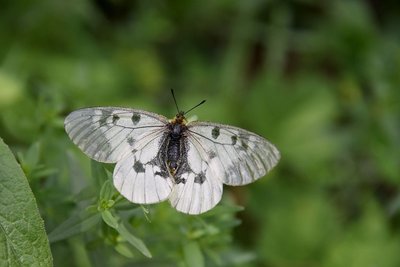
Le semi-apollon - Mireille Coulon - Parc national des Écrins  Fauna
FaunaThe clouded Apollo
This butterfly with hyaline (glass-like) translucent white wings, marked with two black spots, flutters around the clearing or the edges of the forest, where the host plants of its caterpillars grow: the corydalis. Although abundant locally, it is nevertheless a species in sharp decline and is protected.
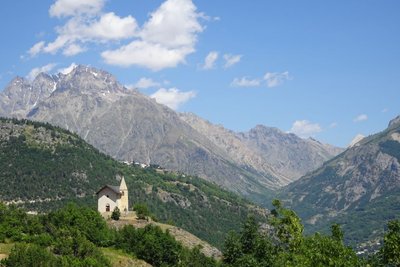
La chapelle Saint-Romain - Office de tourisme Pays des Écrins  History
HistoryThe chapel of Saint-Romain
Included on the Supplementary Inventory of Historical Monuments in 1931, the chapel of Saint-Romain has been converted into an eco museum. It was the first chapel to be built in Puy-Saint-Vincent and is thought to date from the twelfth century. Up to the mid-fifteenth century, the village bore the name of its patron saint: Puy-Saint-Romain. Then, in honour of the arrival of the Dominican monk Vincent Ferrier, the village took the name Puy-Saint-Vincent. It stands on a rocky promontory outside the village, and offers a panoramic view over the Les Écrins massif and the Gyronde Valley, over Vallouise in particular.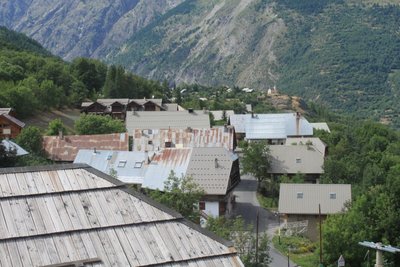
Maison à arcades - Office de tourisme du Pays des Écrins  History
HistoryThe house with arcades
In the municipality of Puy-Saint-Vincent, there are a number of houses typical of the rural architecture of Vallouise, in particular houses with arcades, in the hamlets of Les Alberts and Les Prés. This type of construction can be recognised by the presence of large arches made from stone from the Montbrison massif and supporting walking galleries. Introduced in the eighteenth century by Piedmontese master masons who settled in the valley, this style with arcaded galleries has become characteristic of the architecture of the Vallouise valley. Elegant and monumental, they replaced modest wooden balconies. They facilitated mobility from one level of the house to the other (the houses did not have interior stairs), and at the same time signalled the wealth of the owner.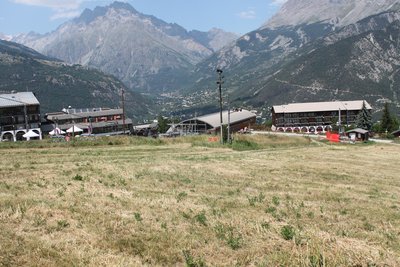
L'histoire de la station de Puy Saint Vincent - Office de tourisme du Pays des Écrins  History
HistoryThe history of the resort of Puy-Saint-Vincent
Puy-Saint-Vincent is the benchmark resort in the Vallouise. Located on the north-facing side of the valley, it is constructed on three levels, each corresponding to a different period of construction: 1400, developed in the late 1970s, 1600, developed from 1973 onwards and 1800, developed from 2005 onwards. Each level is served by a chairlift to reach the skiing area. It now has 35 pistes covering 75.4 kilometres.
